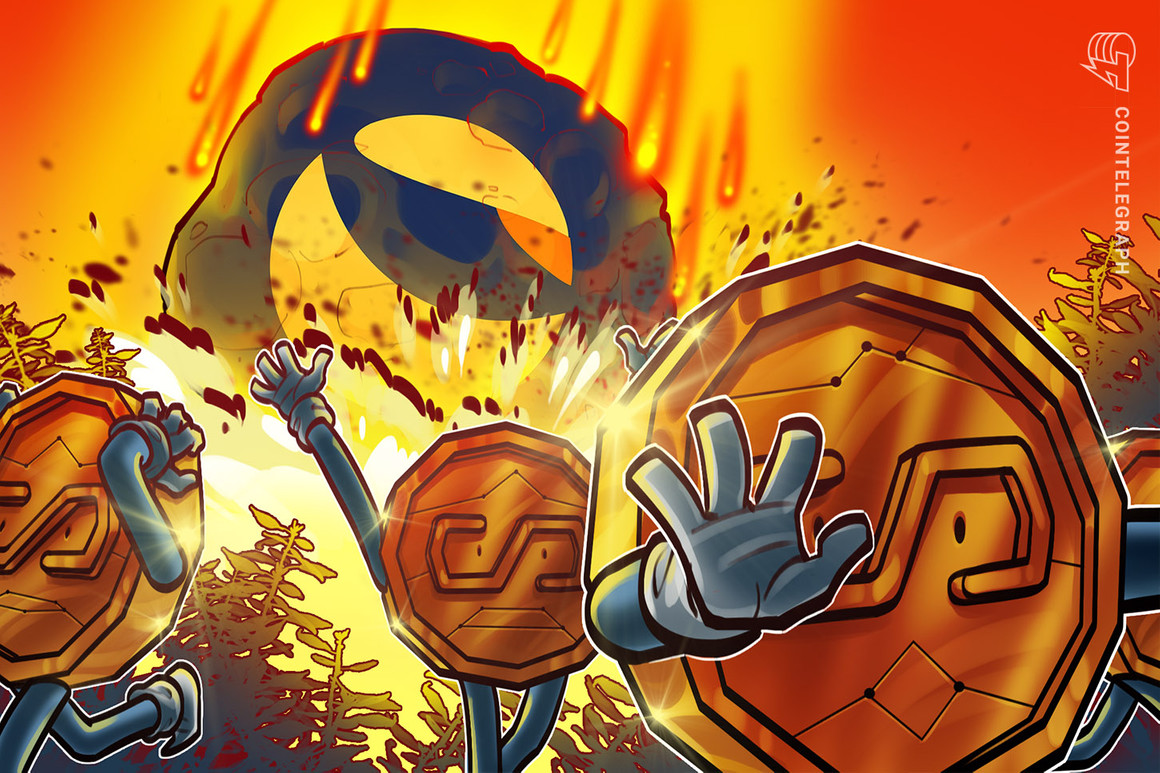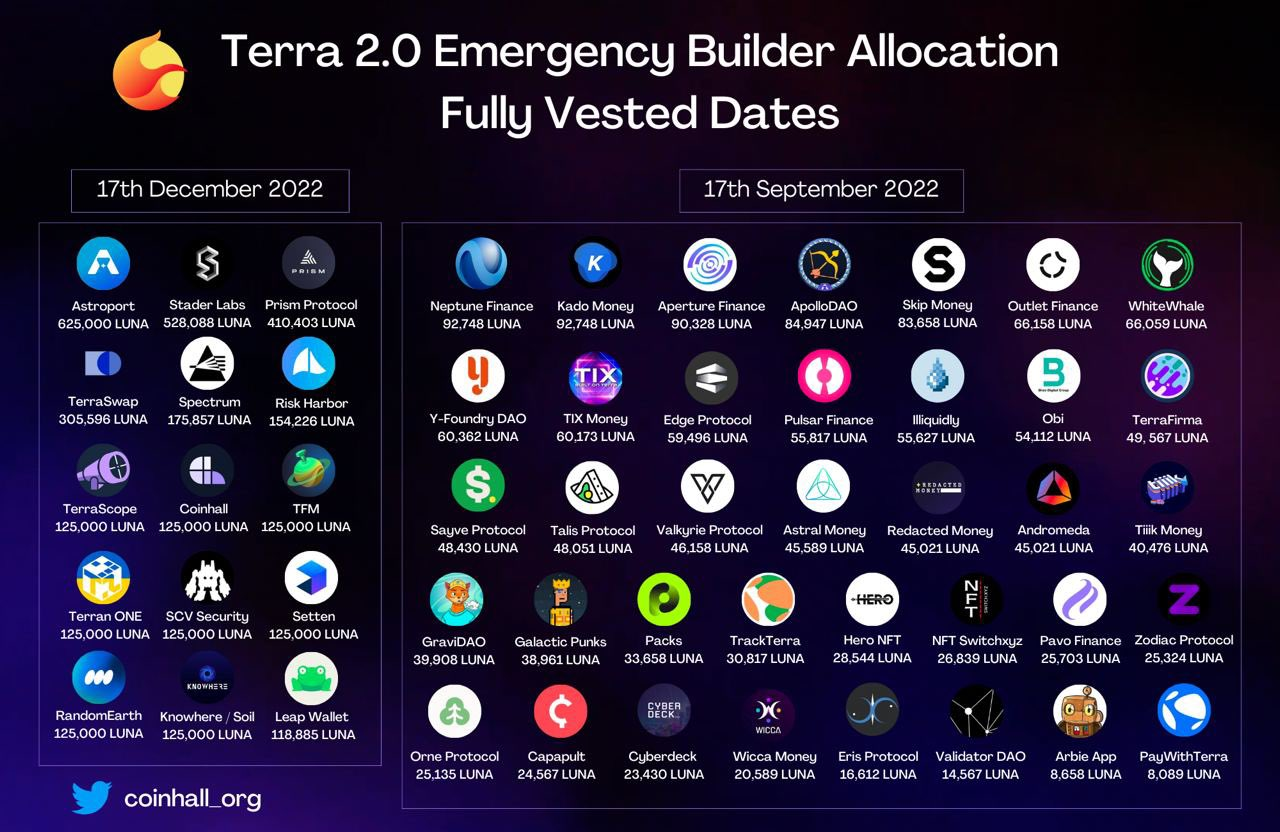
At the height of the 2022 bull market, the Terra ecosystem was booming with talent and innovation. The native token of the Terra blockchain had made its way to the top-10 cryptocurrencies by total market capitalization. Protocols were building the next iteration of a super cycle that seemed like it would never end.
Terraform Labs created Terra amid the crypto market crash of 2018 and built it all through the bear market. The Terra ecosystem’s main appeal and claim for glory came from their offer of the best yields in decentralized finance (DeFi), with up to 20% yield on its stablecoin through the Anchor protocol.
As of March 2022, Terra had a total of 73 projects built in the ecosystem. The ambition of the team was to onboard at least 87 more projects by the end of the year. Terra was becoming a serious competitor to BNB Chain, Solana, Cardano, Avalanche and other layer-1 blockchain infrastructure in their quest to gain market share from the current leader, Ethereum.
Being a blockchain built on the Cosmos network meant Terra could scale and interoperate with other blockchains through the Interblockchain Communication Protocol (IBC). The hype from the bull market was attracting liquidity and Terra was benefiting from users’ appetite for new opportunities in the market.
Terra reached over 90% of the total value locked (TVL) of all the Cosmos blockchains with more than $21 billion worth of assets in May 2022.
That same month of May will be remembered as Terra’s collapse. The Terra token was supposed to maintain the peg of Terra’s algorithmic stablecoin — until it didn’t. Billions of dollars were wiped out from the market in just a couple of days and the flourishing ecosystem Terra had built was left for dead.
Related: What happened? Terra debacle exposes flaws plaguing the crypto industry
The community was fast to act. Although there was no attempt to revive the Terra token and its failed pegging mechanism to the stablecoin, a new network was created in an attempt to compensate those affected by the crash, not in full but more as a symbolic gesture of how resilient a community can be in Web3.
There are now three different trading tokens to take into account in the market: Terra (LUNA) the new networks’ token, Luna Classic (LUNC), which is how the token was rebranded after the new network was created, and TerraUSD Classic (USTC) the failed algorithmic stablecoin previously known as UST.
Currently, LUNC has a market capitalization of $2.8 billion, while LUNA has just over $303 million. The new Terra blockchain has a lower market capitalization than the failed USTC with $415 million.
Where did talent go after Terra collapsed?
Suddenly and with no time to prepare, those projects that had chosen to build on Terra faced a tough decision that to this date hasn’t happened before, at this scale or severity.
An attempt was made through Terra 2.0 to compensate projects by providing much-needed liquidity to those affected. The grants were distributed on June 17, with half of the tokens available on that date, and the rest remained locked for a period of three to six months of linear vesting.
For the projects that stayed, the Terra 2.0 Emergency Builder Allocation program will unlock a new round of tokens for 35 projects. On Sept. 17, Neptune finance will receive the biggest amount of LUNA of almost $185,000 in value.

The last group of 15 projects for this program will receive the tokens on Dec. 17, Astroport will unlock the most with $1.25 million worth of LUNA and Leap Wallet receiving the smallest amount of this group with $235,000 worth of LUNA at current market price.
As Terra was built from within the Cosmos network, this was a natural migration choice for some of the protocols. The IBC architecture enabled projects to stay within this ecosystem and easily relocate to a new blockchain.
Not every project found the idea of remaining within Cosmos appealing as other blockchains started using developer grants to lure talent and new projects to their network.
With the Ethereum Merge right around the corner, Ethereum Virtual Machine (EVM) compatible blockchains have been outperforming the rest.
Polygon, an Ethereum sidechain, managed to onboard more than 48 projects from the Terra ecosystem through Polygon’s multimillion-dollar Terra Developer Fund. An effective strategy in attracting the talent that was unexpectedly available when Terra collapsed in May.
UPDATE: Terra projects have begun migration. Over 48 projects and counting… including @OnePlanet_NFT, an exclusive @0xPolygon marketplace, and @DerbyStars_HQ!
— Ryan Wyatt (@Fwiz) July 8, 2022
It was so awesome to help and welcome all these wonderful developers to our thriving ecosystem!
Welcome! $MATIC https://t.co/5ypu1QdMBA pic.twitter.com/JcskdWGnZJ
BNB Chain, the EVM-compatible blockchain created by Binance, is also committed to providing investment and support to projects that are considered migrating from the Terra ecosystem from the BNB Chain Fund, which has $1 billion in investment and grants to distribute among those projects deploying within the BNB Chain ecosystem.
Other networks like VeChain and Kadena unsuccessfully tried to take advantage of the talent migration.
Building a new chapter for projects that survived
Many great projects and talented people within the ecosystem were pushing for progress and had good intentions in what they were building on Terra. From the ashes of the debacle, these talented individuals will keep on building and creating tools for the betterment of the space as a whole.
There are six projects currently developing the new Terra ecosystem with just over $23 million TVL at the time of writing.

Chauncey St. John, founder of the Angel Protocol, told Cointelegraph, “We lost a huge chunk of our treasury but live to fight another day and will be relaunching in the next couple of weeks,” adding:
“Angel Protocol has learned the importance of diversification and leaned into the fact that we can do more good as a multi-chain entity. As such, we’re launching both IBC and EVM compatible hubs.”
Lido, the leading liquid staking derivatives protocol, known for its market dominance of Ethereum liquid staking, also offered its services for those LUNA token holders that wanted to stake with them and remain liquid. After the collapse of Terra, the protocol decided to wind down its operations around LUNA and put in motion a shutdown process for this liquid staking token. There is no known interest from Lido to support Terra 2.0 liquid staking tokens for the time being.
Title: Collapse of Terra blockchain ecosystem forces talent migration
Sourced From: cointelegraph.com/news/collapse-of-terra-blockchain-ecosystem-forces-talent-migration
Published Date: Tue, 13 Sep 2022 14:14:00 +0100
Did you miss our previous article...
https://trendinginthenews.com/crypto-currency/cryptocurrency-is-picking-up-as-an-instrument-for-tyranny






